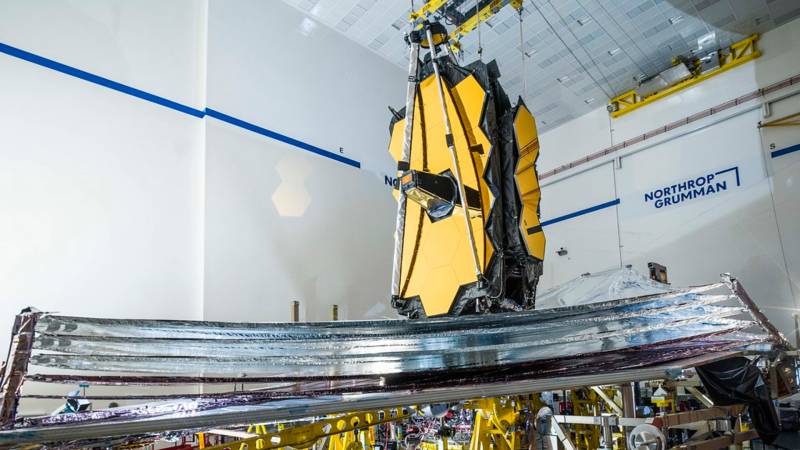Later this year, NASA’s James Webb Space Telescope will be strapped to a French rocket and launched nearly one million miles into space to look at galaxies formed 300 million years after the Big Bang. The telescope employs new and novel technology, including a gold-covered mirror, the largest ever launched into space, and a sunshield the size of a tennis court and made of five paper-thin layers that will cool down the telescope’s sensitive infrared equipment. The hope is that the telescope, which has taken 25 years to design and build at a cost of $10 billion, will shoot back images even more spectacular than the Hubble Telescope. The engineering risks are complex, but scientists hope for a grand reward. We’ll talk to a panel of experts to learn more.
How to Explore Distant Galaxies Formed 13 Billion Years Ago

NASA’s James Webb Space Telescope sunshield successfully unfolds and tensions in final tests. (Photo courtesy of NASA)
Guests:
Rivka Galchen, contributor, The New Yorker Magazine
David Helfand, professor of astronomy, Columbia University
Marcia Rieke, professor of astronomy and astronomer, Steward Observatory, University of Arizona. Dr. Rieke is the principal investigator for the NIRCam on the James Webb Space Telescope.
Sponsored